#Deep Learning Market
Explore tagged Tumblr posts
Text
Deep Learning Market Poised for Explosive Growth: Forecast to Surge from $12.6 Billion in 2022 to $130.7 Billion by 2032
The deep learning market is expected to be worth US$ 12,569.0 million globally in 2022 and is projected to increase at a CAGR of 26.4% to US$ 130,667 Million globally from 2022 to 2032. The fast use of cloud-based technologies across several businesses is blamed for the expansion of the deep learning market.
Deep learning neural networks are being used by businesses to mine massive volumes of data for insightful information that can be used to develop new products, enhance consumer experiences, and expand revenue potential for the deep learning market. One of the most cutting-edge technologies in business computing is deep learning, which is growing on a global scale.
During the projected period, the worldwide deep-learning market will expand due to the increasing demand for improved human and system interaction. Deep learning algorithms will help humans become more capable as they provide expert advice. Additionally, deep learning technology is increasingly being used in a variety of industrial sectors, including healthcare, finance, retail, and others. Strong R&D for the development of new products is another element propelling this market.
Request for a Sample of this Research Report https://www.futuremarketinsights.com/reports/sample/rep-gb-5013
The rise of data mining applications in the deep learning market is being driven by the rising need for deep learning in fraud detection, database systems, and cyber security. The patient information, diagnosis, and other data sets produced by the healthcare industries are massive. Data mining is therefore expected to experience the fastest growth rate in the healthcare industry shortly.
Deep Learning Market: Market Dynamics: The rising necessity for hardware platforms with high computing power to execute deep learning algorithms is a driving factor of the Deep Learning market Increasing complexity in hardware due to the complex algorithm in deep learning technology can hamper the growth of the Deep Learning market. Growing usage of deep learning in data analytics and database systems growth opportunities for the Deep Learning Market.
Global Deep Learning Market: Competition Landscape: A few prominent players in the Deep Learning market include Google Inc., Microsoft Corporation, Qualcomm Technologies, Inc., IBM Corporation, Intel Corporation, General Vision Inc., and NVIDIA Corporation, etc.
Key Segments Profiled in the Deep Learning Industry Survey
Deep Learning Market by Product:
Hardware
Software
Services
Deep Learning Market by Application:
Image Recognition
Signal Recognition
Translation
Data Mining
Deep Learning Market by End User:
Automotive
Media & Entertainment
Aerospace & Defence
BFSI
Retail
Healthcare
Deep Learning Market By Region:
North America Deep Learning Market
Europe Deep Learning Market
Latin America Deep Learning Market
Asia Pacific Deep Learning Market
Middle East & Africa Deep Learning Market
0 notes
Text
#Deep Learning Market#Deep Learning Market size#Deep Learning Market share#Deep Learning Market trends#Deep Learning Market analysis#Deep Learning Market forecast#Deep Learning Market outlook
0 notes
Text
Key Industries & Applications in the Global Deep Learning Market
Over the years, deep learning has emerged as a transformative technology, revolutionizing the way various industries operate. Accordingly, the domain has become instrumental in the field of data analysis, predictive modeling, and process optimization. As per Inkwood Research, the global deep learning market is anticipated to grow with a CAGR of 39.67% during the forecast period 2023-2032.

In this blog, we will explore how major industries are leveraging the potential of deep learning in order to drive innovation and efficiency in their operations. We will also highlight real-world examples of successful deep learning applications in each of these industries.
1. Healthcare
Healthcare organizations of all specialties and types are becoming increasingly inclined toward how artificial intelligence (AI) can facilitate better patient care, while improving efficiencies and reducing costs. In this regard, the healthcare industry has been at the forefront of adopting deep learning for a wide range of applications, such as –
Medical Imaging: Deep learning algorithms have significantly improved the accuracy of medical image analysis. For instance, Aidoc (Israel), a leading provider of AI-powered radiology solutions, aims to improve the efficacy as well as accuracy of radiology diagnoses. The company’s platform utilizes deep learning algorithms in order to analyze medical images and aid radiologists in prioritizing and detecting critical findings.
Drug Discovery: Pharmaceutical companies are using deep learning to expedite drug discovery processes. Insilico Medicine (United States), for example, employs deep learning models to predict potential drug candidates, reducing the time and cost associated with developing new medications. The company’s early bet on deep learning is yielding significant results – a drug candidate discovered via its AI platform is now entering Phase II clinical trials for the treatment of idiopathic pulmonary fibrosis.
Disease Diagnosis: Deep learning is aiding in disease diagnosis through predictive modeling. PathAI (United States), for instance, utilizes deep learning-based AI solutions to assist pathologists in the detection, diagnosis, and prognosis of several cancer subtypes, thus improving the accuracy of diagnoses and patient outcomes.
2. Finance & Banking Services
The success of deep learning as a data processing technique has piqued the interest of the financial research community. Moreover, with the proliferation of Fintech over recent years, the use of deep learning in the finance & banking services industry has become highly prevalent across the following applications –
Fraud Detection: Banks and financial institutions deploy deep learning models to detect fraudulent activities in real time. Companies like Feedzai (Portugal) use deep learning algorithms to analyze transaction data and identify unusual patterns indicative of fraud. In July 2023, the company announced the launch of Railgun, a next-generation fraud detection engine, featuring advanced AI to secure millions from the surge in financial crime.
Algorithmic Trading: Hedge funds and trading firms leverage deep learning for algorithmic trading. Investors are utilizing deep learning models to evaluate and anticipate stock and foreign exchange markets, given the advantage of artificial intelligence.
Credit Scoring: Deep learning is transforming the credit scoring landscape. LenddoEFL (Singapore), for instance, creates, collects, and analyzes information from consent-based alternative data sources for an accurate understanding of creditworthiness. The company’s unique credit decisioning tools draw from large, diverse, and unstructured data sources through deep learning, artificial intelligence, and advanced modeling techniques.
3. Manufacturing
Here’s how the manufacturing industry benefits from deep learning in optimizing production processes and quality control –
Predictive Maintenance: Manufacturers use deep learning to predict equipment failures and schedule maintenance proactively. General Electric’s (United States) Predix platform employs deep learning to support innovative IoT solutions to help reduce downtime and maintenance costs.
Quality Control: Deep learning-based image recognition systems inspect products for defects on production lines. Real-time deep learning approaches are essential for automated industrial processes in product manufacturing, where vision-based systems effectively control the fabrication quality on the basis of specific structural designs.
Supply Chain Optimization: According to industry sources, deep learning models have the potential to generate between $1-2 trillion annually in supply chain management. In this regard, deep learning is used in the manufacturing sector to optimize supply chain operations by predicting demand patterns, enhancing inventory levels, and improving logistics planning.
Deep learning’s ability to process vast amounts of data and recognize complex patterns is transforming the way industries operate, making processes more efficient and enhancing customer experiences. As businesses strive to remain competitive in an increasingly data-driven world, leveraging deep learning and staying updated on its latest developments will be crucial for the overall growth of the global deep learning market.
FAQs:
What are the key components of a deep learning system?
A deep learning system typically comprises input data, a deep neural network architecture, loss functions, optimization algorithms, and labeled training data.
How does deep learning differ from traditional machine learning?
Deep learning, unlike traditional machine learning, eliminates the need for manual feature engineering by allowing models to learn and extract features automatically from data.
0 notes
Text







caps from comic Im doing
#not art yet. sorta#yeah that's one piece#outing myself this year as a sanji enjoyer#idk what compelled me to come back here (that's a lie I know 100% and it's haterism) but I did finally sit down and put down#this idea I've sat on for a Long time. bc I think I just. finally feel ready for it#or rather. both it and myself have been worn down and moulded enough by just. time passing. to be able to sit with each other in peace#but yeah I'm now neck deep in this (almost halfway thru inking!!) and Im learning a Lot#whatever u say abt one piece oda is a Phenomenal comic artist. one piece art-wise is dense on a level that makes me feel insane#like you barely see more than one type of screentone used and it's mostly to separate planes. its Just Ink. its fucked up#and drawing this comic is forcing me to show up on my a-game on a craft level as well. I love so much a Large part of it so far#comic is good guys. did u guys know that has anyone said this before#but yeah this one will! probably get posted to my main blog when the posting version is done. which is why I said in the prev ask#that the spheres might intersect soon lol#Im aware this is a stupid way to go about it if u look at it from a marketing/advertising angle. but thats not what Im here for#Im showing u cool bugs I made basically. and when the exhibit happens its gonna have mostly nothing to do with this#but yeah. if u see a comic with these caps in it in the future u will Know#otherwise we keep up kayfabe yeah? for fun. for comfort
73 notes
·
View notes
Text
gonna learn some canva to better my chances of getting a new marketing job. to make it fun and Not Scary for myself I'm thinking of making little graphics themed around ponies I like, so i can get a little practice and post them here without feeling like they need to be the Best Thing Ever
#the deep fear of being visibly A Beginner as an adult online#I'm in the process of being laid of bc of the company losing money so#I'm applying to jobs but a LOT of marketing jobs#want people who do text of all genres and social media work and brand strategy and social media videos (all of which I can do)#but ALSO be able to create graphics#so I'm gonna learn canva for easy graphics dont worry I know thats not as good as actual graphic design#but you know thats a whole ass separate education#Im doing what I can ok
12 notes
·
View notes
Text
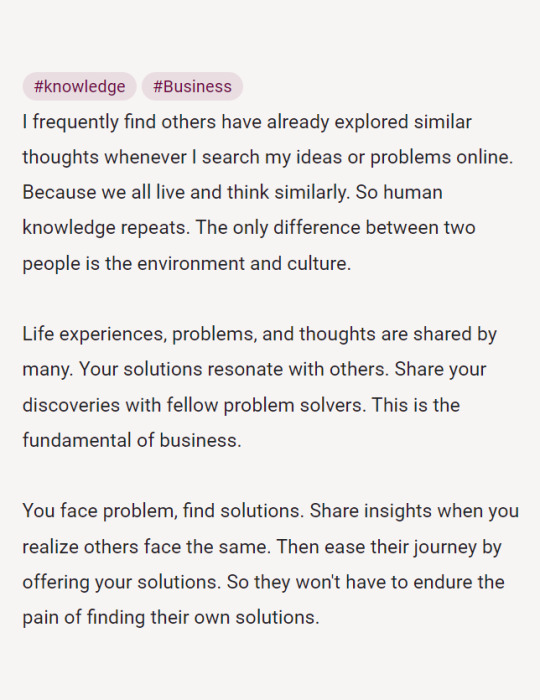
#business#branding#marketing#psychology#thoughts#knowledge#learning#reality#thinking smart#deep thoughts
2 notes
·
View notes
Text
10 Ways To Use Machine Learning For Marketing In 2024
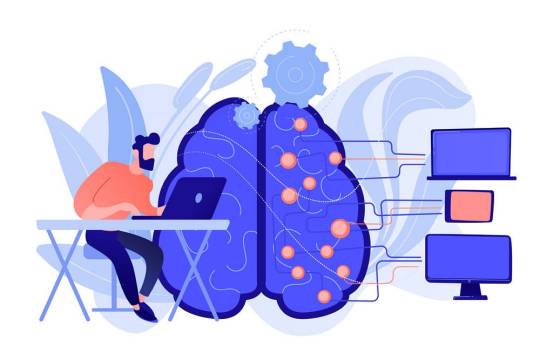
Introduction:
As the digital marketing arena continues to evolve, machine learning has emerged as a important force reshaping the industry’s scene. To dvelve deeper into this transformative journey, we invite you to explore this insightful article on Analytics Vidhya that provides a comprehensive overview of machine learning’s impact on marketing in 2023 as well as 2024.
Now, let’s journey into the world of machine learning and discover how it empowers marketers to achieve unprecedented results.
1. Personalized Customer Experiences:
Machine learning, the driving force behind personalized customer experiences, analyzes extensive datasets to deliver tailored content, product recommendations, and also experiences. Personalization reigns supreme in effective marketing in 2023.
2. Predictive Analytics:
Machine learning models provide invaluable insights by forecasting trends, customer behavior, and market fluctuations. This empowers businesses to make data-driven decisions, enabling them to stay one step ahead of the competition.
3. Enhanced Lead Scoring:
Machine learning’s capability to rank leads based on their likelihood to convert is a game-changer. Sales teams can now prioritize their efforts and focus on the most promising prospects, boosting efficiency.
4. Chatbots and Virtual Assistants:
Chatbots, powered by machine learning, offer round-the-clock customer support, promptly respond to inquiries, also guide customers through their buying journey with finesse.
5. Content Optimization:
Machine learning tools optimize content creation by identifying the most engaging topics, keywords, as well as formats for your target audience.
6. Improved Email Marketing:
Machine learning algorithms analyze email engagement data to improve send times, subject lines, and content, resulting in higher open rates and click-through rates.
7. Social Media Insights:
Machine learning’s prowess is harnessed to monitor social media conversations and sentiment. This equips brands with invaluable insights into public perception, enabling them to refine their strategies effectively.
8. Ad Targeting and Optimization:
Machine learning-powered ad platforms utilize real-time data to target audiences more effectively. This not only reduces ad spend wastage but also increases ROI significantly.
9. Customer Segmentation:
Machine learning fine-tunes customer segmentation, facilitating the creation of hyper-targeted campaigns that resonate with specific audience segments.
10. Fraud Detection and Prevention:
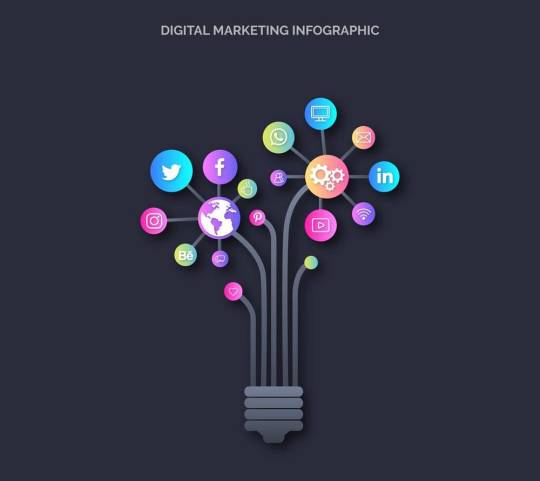
Empowering Your Machine Learning Journey:
While the potential of machine learning for marketing is vast, partnering with the right experts is crucial. Top-tier agencies like Hackfuel are leading the charge in integrating machine learning into marketing strategies. They understand that in 2023 and 2024, data collection alone isn’t enough; also it’s the transformation of data into actionable insights that truly drives success.
As you embark on your marketing journey in 2023, but remember that machine learning isn’t a standalone solution; it’s a catalyst for innovation. By harnessing these ten potent strategies, you can unlock the true potential of machine learning, driving growth, engaging customers, as well as outperforming your competition.
The Future is Data-Driven:
In the marketing landscape of 2023 and 2024, data is the driving force. Machine learning is the key that unlocks this data’s potential, enabling businesses to comprehend their customers deeply, make informed decisions, and craft personalized experiences that resonate. Whether it’s predictive analytics, customer segmentation, or ad optimization, machine learning is the cornerstone of marketing’s evolution.
Conclusion:
As you navigate the marketing landscape in 2023, remember that machine learning isn’t just a trend; it’s a transformative force. Incorporate these ten strategies into your marketing playbook, explore partnerships with experts like Hackfuel, and witness how machine learning propels your marketing endeavors to new heights in 2023 and 2024, also beyond.
With these cutting-edge strategies, seamlessly integrated with the expertise of a digital marketing agency like Hackfuel, you’ll experience a paradigm shift in your marketing efforts. Digital marketing agencies are adapting to the machine learning revolution, and collaborating with the best digital marketing agency in Pune is your key to staying ahead in this ever-evolving landscape.
2 notes
·
View notes
Text
Revolutionizing Advertising: How Daniel Reitberg Utilizes AI to Personalize Campaigns

The Power of AI in Advertising
AI, a game-changer in the advertising industry, allows Daniel Reitberg to leverage consumer data and insights for creating personalized campaigns.
Enhancing Customer Understanding
By harnessing the potential of AI, Daniel Reitberg can delve deep into consumer data, gaining valuable insights into preferences, behaviors, and demographics. This understanding enables the creation of highly targeted and personalized advertising campaigns.
Dynamic Content Creation
With AI-driven algorithms, Daniel Reitberg can generate dynamic and engaging content tailored to individual consumers. By analyzing consumer preferences, AI assists in creating compelling visuals, captivating copy, and immersive experiences that resonate with the target audience.
Maximizing Campaign Effectiveness
Using AI as a powerful tool, Daniel Reitberg ensures that every campaign is optimized for maximum effectiveness.
Precision Targeting
AI algorithms analyze vast amounts of consumer data, allowing Daniel Reitberg to identify the most relevant and receptive audience segments. By targeting specific demographics and interests, campaigns can achieve higher conversion rates and ROI.
Real-time Optimization
AI-driven tools enable Daniel Reitberg to monitor campaign performance in real time. By continuously analyzing data, making adjustments, and optimizing targeting parameters, campaigns can adapt and deliver better results throughout their lifecycle.
Personalized Customer Journeys
Daniel Reitberg leverages AI to craft personalized customer journeys, creating a seamless and tailored experience for consumers.
Predictive Analytics
By harnessing the power of AI, Daniel Reitberg predicts customer behaviors and preferences, anticipating their needs at each stage of the journey. This allows for the delivery of personalized messages, offers, and recommendations, enhancing customer satisfaction and loyalty.
Automation and Chatbots
AI-powered chatbots provide instant and personalized support to consumers, answering queries, and guiding them through their journey. With automation, Daniel Reitberg ensures consistent and efficient customer interactions, freeing up valuable resources for strategic initiatives.
Ethical Considerations and Future Implications
Daniel Reitberg acknowledges the ethical implications of leveraging consumer data and emphasizes the importance of transparency, privacy, and data security in AI-driven advertising.
Privacy Protection
Respecting consumer privacy is a priority for Daniel Reitberg. AI-driven campaigns are built on an ethical foundation that ensures compliance with data protection regulations and transparent data practices.
The Future of AI in Advertising
As AI technology continues to advance, Daniel Reitberg envisions a future where AI plays an even greater role in personalized advertising. With machine learning and predictive analytics, campaigns will become more refined and effective, fostering stronger connections between brands and consumers.
In conclusion, Daniel Reitberg's expertise in leveraging AI to harness consumer data and insights revolutionizes the advertising industry. By personalizing campaigns, optimizing targeting, and crafting tailored customer journeys, AI opens up new possibilities for engaging and impactful advertising experiences.
#artificial intelligence#machine learning#deep learning#technology#advertising#marketing#advertising campaign
1 note
·
View note
Text

Qureight and Avalyn Pharma partner to advance pulmonary fibrosis treatment with deep-learning image analytics, shaping pharmaceutical market trends.
#Qureight#Avalyn Pharma#pulmonary fibrosis treatment#deep learning image analytics#pharmaceutical partnerships#respiratory disease research#AI in healthcare#pharmaceutical market trends#medical imaging technology#fibrosis drug development#precision medicine#healthcare innovation#biotech collaboration
1 note
·
View note
Text
https://heyjinni.com/read-blog/229623_ai-039-s-neural-core-forecasting-the-deep-learning-market-surge.html
0 notes
Text
From Code to Cognitive – Atcuality’s Intelligent Tech Framework
Atcuality is redefining enterprise success by delivering powerful, scalable, and intelligent software solutions. Our multidisciplinary teams combine cloud-native architectures, agile engineering, and business domain expertise to create value across your digital ecosystem. Positioned at the crossroads of business transformation and technical execution, artificial intelligence plays a vital role in our delivery model. We design AI algorithms, train custom models, and embed intelligence directly into products and processes, giving our clients the edge they need to lead. From automation in finance to real-time analytics in healthcare, Atcuality enables smarter decisions, deeper insights, and higher efficiency. We believe in creating human-centered technology that doesn’t just function, but thinks. Elevate your systems and your strategy — with Atcuality as your trusted technology partner.

#seo services#artificial intelligence#iot applications#seo agency#seo company#seo marketing#digital marketing#azure cloud services#ai powered application#amazon web services#ai image#ai generated#ai art#ai model#technology#chatgpt#ai#ai artwork#ai developers#ai design#ai development#ai deep learning#ai services#ai solutions#ai companies#information technology#software#applications#app#application development
0 notes
Text
applied for a job!!!
#praying my application was decent bc this is kinda ideal situation for next year at this point#I’ve been getting rlly upset abt everything and was feeling Bad this weekend for nebulous reasons that I think can largely be traced back to#not knowing what I’m doing next. so I’m feeling a little better now I’ve done this! and the application wasn’t even that painful to do#it just took a while. I saw it like two weeks ago while I was deep in dissertation hell and checked back today and Oops Closes Tomorrow#so I was working on it solidly from 5pm-1am with like an hour break to eat#man that’s a full 8 hour workday#did also manage to destroy a bunch of progress I’d made in not picking my nails (anxiety 😔) but bleugh can’t kick a lifelong habit instantly#but god yeah I’m like. really unsure what to do even if I get this job bc then I need to find somewhere to live and prepare myself for maybe#immediately working once I graduate? which would kinda suck but might be how it is#and also deal with staying in this city for another year#I don’t know how to feel about any of it and I’ve been really confused and upset by the whole thing bc I don’t like any options I have rn#what I would like to do is be going to start a PhD now I know I want to do one and go somewhere completely new with a framework built in for#reestablishing my life there. bc that’s the expectation when you start a phd#staying in this city is frustrating because the housing market is a COMPLETE shitshow and worse bc I can’t cycle or drive (I should learn)#and bc majority of my friends moving away and I have a feeling the ones who aren’t have other plans‚ and idk how much I’ll see them#going home is an even worse option but my parents really want me to. reeeaaally pushing that rn#I am not going into that here I will retain some dignity#but goddamn okay. I’m proud of myself for doing this and for managing to be optimistic about it while I was writing#it’s never been that easy before and I think I wrote a really good application#cautiously optimistic abt my prospects and abt the idea of staying here. this is just the first step towards that#and I have space to figure stuff out but this would give me some stability and I really want that right now#yeah! :D ooOOoOoOooOo you want to employ me so bad oOooOoOOoOoo#luke.txt
1 note
·
View note
Text
AI Deep Learning Accelerates Drug Development
Deep learning is a subset of artificial intelligence (AI) that mimics the neural networks of the human brain to learn from large amounts of data, enabling machines to solve complex problems. Deep learning technology has made significant progress in the biomedical field. Researchers have developed a series of application based on deep learning for disease diagnosis, protein design, and medical image recognition. The pharmaceutical industry is also beginning to recognize the importance of deep learning technology, hoping to leverage it to accelerate drug development and reduce costs.
1. Application of Deep Learning in Drug Development
Previous studies have demonstrated that deep learning technology offers significant advantages in several key areas of drug development, including optimization of chemical synthesis routes, ADME-Tox prediction, target identification and validation and generation of novel molecules.
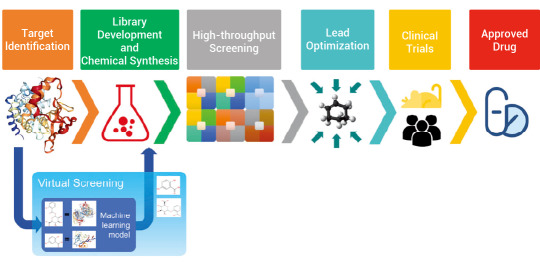
Figure 1. A broad overview of drug development and the place of virtual screening in this process[1].
1.1 Virtual Screening: Protein-Ligand Affinity
Deep learning can learn and identify potential binding patterns by comparing known protein-small molecule binding instances. During the training process, the deep learning models continuously optimize their parameters to enhance the accuracy and reliability of their predictions.
Yelena Guttman et al. developed a CYP3A4 inhibitor prediction model based on DeepChem framework. They created a KNIME workflow for data curation and employed the DeepChem module in Maestro to build a categorical classifier. This classifier was then used to virtually screen approximately 68,900 compounds from the FooDB database, leading to the successful identification of two new CYP3A4 inhibitors[2].
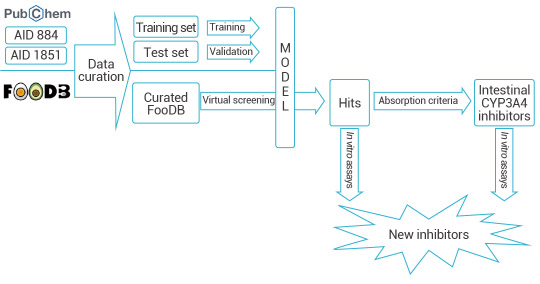
Figure 2. Prediction of CYP3A4 Inhibitors Based on DeepChem[2].
A workflow in KNIME analytics platform 4.0.314 was created to prepare and analyze the virtual screening.
1.2 ADME-Tox Prediction
Poor pharmacokinetic properties as well as toxicity issues are considered the main reasons for terminating the development process for drug candidates. Thus, there is an increasing need for robust screening methods to provide early information on absorption, distribution, metabolism, excretion, and toxicity (ADME-Tox) properties of compounds. Many studies have shown by leveraging these extensive ADME datasets, deep learning models can automatically identify and extract complex relationships between compound features and their corresponding ADMET properties. These trained models can then be used to predict the ADME properties of new compounds, thereby accelerating the process of drug discovery and development.
Liu et al. utilized directed message passing neural networks (D-MPNN, Chemprop) to predict the Nrf2 dietary-derived agonists and safety of compounds in the FooDB database. They successfully identified Nicotiflorin, a drug that exhibits both agonistic activity of Nrf2 and safety, which was validated in vitro and in vivo[3].
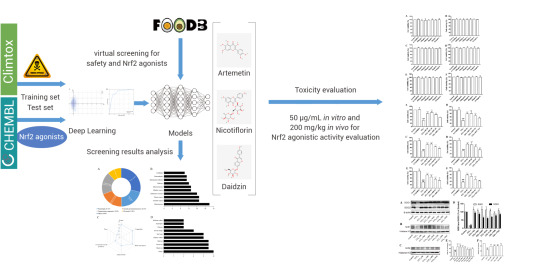
Figure 3. Using Deep-Learning Model D-MPNN to Assess Drug Safety[3].
1.3 Optimize Chemical Synthesis Routes
In recent years, it has been seen that artificial intelligence (AI) starts to bring revolutionary changes to chemical synthesis. However, the lack of suitable ways of representing chemical reactions and the scarceness of reaction data has limited the wider application of AI to reaction prediction. Deep learning is increasingly being applied to chemical synthesis, enabling the automatic identification and extraction of features and patterns from large datasets. This capability enhances the prediction of the efficiency and selectivity of new synthesis routes, significantly accelerating drug development and production.
Li et al. introduced a novel reaction representation, GraphRXN, for reaction prediction. G
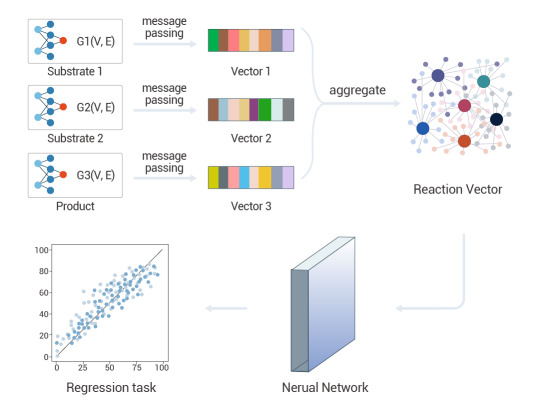
Figure 4. A deep-learning graph framework, GraphRXN, was proposed to be capable of learning reaction features and predicting reactivity[4].
2. Drug Screening Based on Deep Learning
The application of deep learning in the field of virtual screening primarily involves using neural networks to predict the activity or properties of compounds, thereby identifying potential candidate drugs or materials in a virtual environment. Commonly used deep learning models include Convolutional Neural Networks (CNN), Graph Neural Networks (GNN), Recurrent Neural Networks (RNN), Generative Adversarial Networks (GAN) and Transformer models.
CNNs excel at identifying patterns and features in structured data, such as chemical structures represented as images or graphs. Recent studies have demonstrated their effectiveness in predicting drug-drug interactions and assessing molecular properties by analyzing chemical substructures and other relevant features.
GNNs are designed to work directly with graph-structured data, making them particularly suitable for representing molecular structures where atoms are nodes and bonds are edges. They have shown remarkable performance in drug discovery by capturing the complex relationships between molecules and their properties.
RNNs are designed to handle sequential data, making them particularly effective for tasks where context from previous inputs is essential.
GANs consist of two neural networks—a generator and a discriminator—that work against each other to create new data instances.
Transformers have gained popularity for their ability to handle sequential data and capture long-range dependencies, making them suitable for tasks like natural language processing and time-series analysis.
In summary, deep learning is revolutionizing drug development by enhancing efficiency, accuracy, and cost-effectiveness across multiple stages of the process. As technology continues to evolve, its integration into pharmaceutical research is likely to deepen, paving the way for innovative therapeutic solutions.
Product Recommendation
Virtual Screening
MedChemExpress (MCE) provides high quality virtual screening service that enables researchers to identify most promising candidates. Based on the laws of quantum and molecular physics, our virtual screening services can achieve highly accurate results. Our optimized virtual screening protocol can reduce the size of chemical library to be screened experimentally, increase the likelihood to find innovative hits in a faster and less expensive manner, and mitigate the risk of failure in the lead optimization process.
50K Diversity Library
MCE 50K Diversity Library consists of 50,000 lead-like compounds with multiple characteristics such as calculated good solubility (-3.2 < logP < 5), oral bioavailability (RotB <= 10), drug transportability (PSA < 120). These compounds were selected by dissimilarity search with an average Tanimoto Coefficient of 0.52. There are 36,857 unique scaffolds and each scaffold 1 to 7 compounds. What’s more, compounds with the same scaffold have as many functional groups as possible, which make abundant chemical spaces.
MegaUni 10M Virtual Diversity Library
With MCE's 40,662 BBs, covering around 273 reaction types, more than 40 million molecules were generated. Compounds which comply with Ro5 criteria were selected. Inappropriate chemical structures, such as PAINS motifs and synthetically difficult accessible, were removed. Based on Morgan Fingerprint, molecular clustering analysis was carried out, and molecules close to each clustering center were extracted to form this drug-like and synthesizable diversity library. These selected molecules have 805,822 unique Bemis-Murcko Scaffolds (BMS) with diversified chemical space. This library is highly recommended for AI-based lead discovery, ultra-large virtual screening and novel lead discovery.
MegaUni 50K Virtual Diversity Library
MegaUni 50K Virtual Diversity Library consists of 50,000 novel, synthetically accessible, lead-like compounds. With MCE's 40,662 Building Blocks, covering around 273 reaction types, more than 40 million molecules were generated. Based on Morgan Fingerprint and Tanimoto Coefficient, molecular clustering analysis was carried out, and molecules closest to each clustering center were extracted to form a drug-like and synthesizable diversity library. The selected 50,000 drug-like molecules have 46,744 unique Bemis-Murcko Scaffolds (BMS), each containing only 1-3 compounds. This diverse library is highly recommended for virtual screening and novel lead discovery.
References
[1] Rifaioglu AS, et al.Brief Bioinform. 2019 Sep ;20(5):1878-1912.
[2] Guttman Y, et al.J Agric Food Chem. 2022 Mar ;70(8):2752-2761.
[3] Liu S, et al.J Agric Food Chem. 2023 May ;71(21):8038-8049.
[4] Li B, et al.J Cheminform. 2023 Aug;15(1):72.
[5] Segler MHS, et al. Planning chemical syntheses with deep neural networks and symbolic AI. Nature. 2018 Mar ;555(7698):604-610.
#biochemistry#chemistry#inhibitor#business#marketing#kit#developers & startups#AI Deep Learning Accelerates Drug Development
0 notes
Text
🚀🤖 The Future of Robotics is Here! 🤖🚀 👉 Meet the Unitree G1 Humanoid Robot 🤩💡 ✅ Walks at 2 m/s speed 🏃♂️ ✅ 360° Vision for Smart Navigation 👀🛰 ✅ Deep Learning for Real-World Tasks 📚💻 ✅ Handles Fragile Objects with Care 🥛🖐 ✅ Ideal for Healthcare 🏥, Manufacturing 🏭 & Space Exploration 🚀🌌 💵 Price starts at $116,000 💸 🔥 Game-changer for Industries! 💥 👉 Want to know more? Click here! 📲👇 🔗 #UnitreeG1 #HumanoidRobot #AI #FutureTech #Robotics #Innovation 🚀🛠
#advanced robot#affordable humanoid robot#Artificial Intelligence#construction robot#deep reinforcement learning#Future of Robotics#G1 EDU version#G1 robot#humanoid AI#humanoid robot#humanoid robot market#humanoid robot price#industrial automation#industrial robotics#manufacturing robot#research humanoid robot#robot for education#robot for industry#robot with 360-degree vision#robot with advanced sensors#robotics future#smart learning robot#space exploration robot#Unitree G1#Unitree G1 advanced technology#Unitree G1 applications#Unitree G1 features#Unitree G1 hand dexterity#Unitree G1 humanoid robot#Unitree G1 learning capability
1 note
·
View note